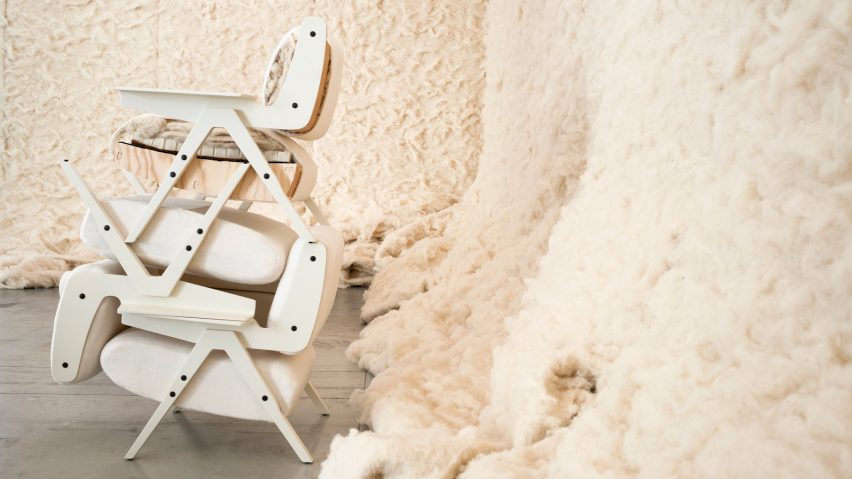
Five products that use wool in new and unexpected ways
A 3D-printed sofa, a biodegradable urn and a "net-zero carbon shoe" are among a growing cohort of products that are pushing the envelope of what sheep's wool can do.
Designers are increasingly finding a new appreciation for this ancient material, which has been used by humans since the start of civilisation and is rapidly renewable, naturally insulating, water-resistant and biodegradable.
However, much of the wool produced by European sheep is too coarse to be turned into garments, meaning their fleece often ends up being discarded.
Research-driven studios from Formafantasma to Christien Meindertsma are now finding innovative applications for this abundant waste material that go far beyond traditional textiles.
Shoe brand Allbirds is also exploring wool as a potentially carbon-neutral material – provided that it is regeneratively farmed, using agricultural practices that store more carbon than they emit.
Under the current mass animal agriculture system, wool is still ranked among the fashion industry's top five most polluting materials due to the natural resources needed to raise sheep and the methane emissions they generate throughout their life.
Read on for five examples of projects exploring the potential of wool as a material that can do good rather than harm.
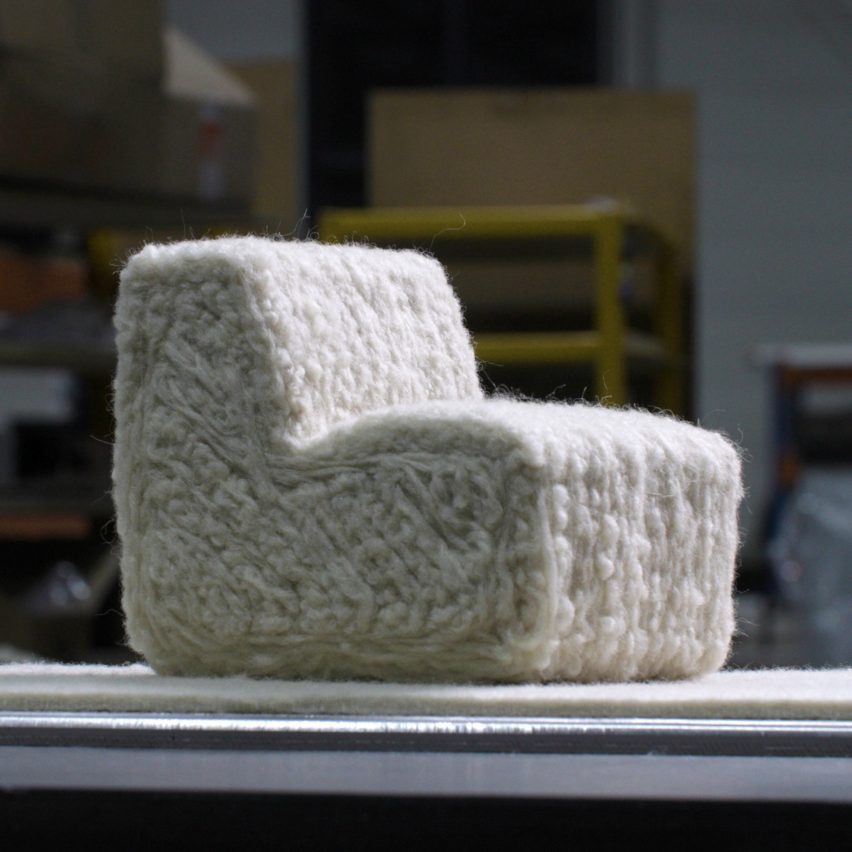
Flocks Wobot by Christien Meindertsma
Dutch designer Christien Meindertsma has spent the last three years researching how to create high-quality products from the 5,000 kilograms of wool produced every year by the flock of sheep employed by the city of Rotterdam to mow its public parks.
Their wool isn't soft enough to produce everyday textiles, but Meindertsma developed a robot that can build three-dimensional volumes out of this wool much like a 3D printer.
Created in collaboration with technology company TFT, the Flocks Wobot connects layers upon layers of wool using a traditional felting technique without the need for a binder.
"The Wobot is a collaborative robot that makes it possible to build three-dimensional structures with wool industrially for the first time, without adding any material or using water in the felting process," said Meindertsma.
So far, a sofa is the largest object that Meindertsma has been able to create using this technique, which is currently on display at London's V&A. But the robot could feasibly be used to make a variety of different upholstered pieces, as well as insulation and acoustic products, according to the designer.
Find out more about the Flocks Wobot ›
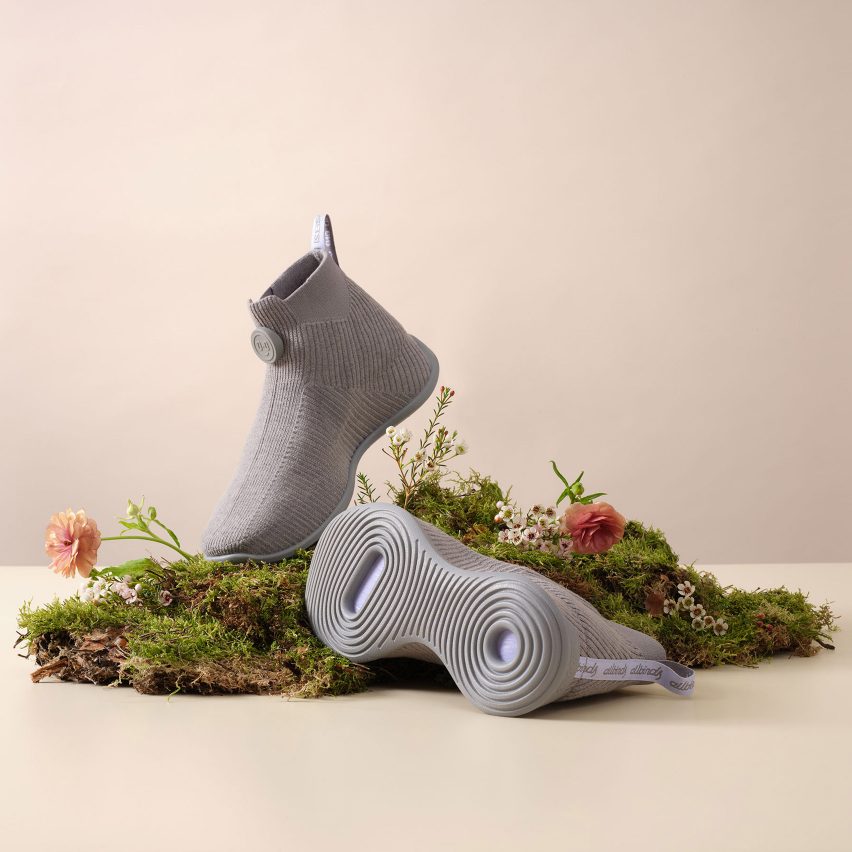
This year saw footwear brand Allbirds unveil the "world's first net-zero carbon shoe" – a sock trainer made using merino wool from a regenerative farm in New Zealand.
Through sustainable land-management practices such as rotational grazing and replanting native vegetation, the farm is able to sequester almost twice as many greenhouse gases as it emits.
In fact, the amount of carbon stored on the farm is enough to offset any other emissions generated over the lifetime of the trainer, Allbirds claims.
"Regenerative wool was a critical pillar of helping us reimagine how products are designed and made through the lens of carbon reduction," the company's co-founder Tim Brown told Dezeen.
"To me, the currently untapped opportunity for naturally derived, net-zero products is the future of fashion."
However, the wool still had to be blended with recycled nylon and polyester to ensure durability, which makes recycling exceedingly difficult and unlikely.
Find out more about Moonshot ›
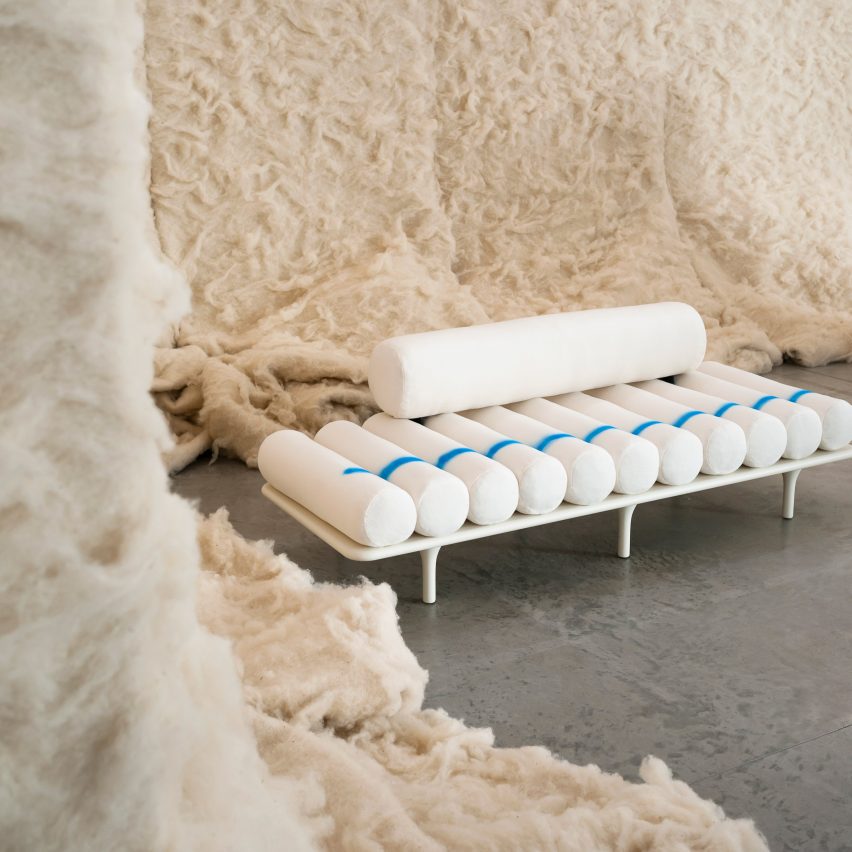
Tacchini Flock by Formafantasma
As part of Milan design week 2023, Formafantasma reimagined seminal seating designs from Italian furniture brand Tacchini to cut out the need for plastic upholstery foam.
Instead, the studio took cues from traditional mattress-making techniques to devise a way of making stuffing for sofas and chairs using waste wool mixed with latex derived from the rubber tree.
The project was born out of research that Formafantasma conducted for its Oltre Terra exhibition at Oslo's National Museum of Norway, exploring the co-dependence that has evolved between humans and sheep.
"Many people are against animal farming, which when it is intensive farming we also think is extremely problematic," said founders Andrea Trimarchi and Simone Farresin.
"But sheep at the moment are not like their wild ancestors, Mouflons – they do not naturally lose hair. They need humans to shear them."
Find out more about Tacchini Flock ›
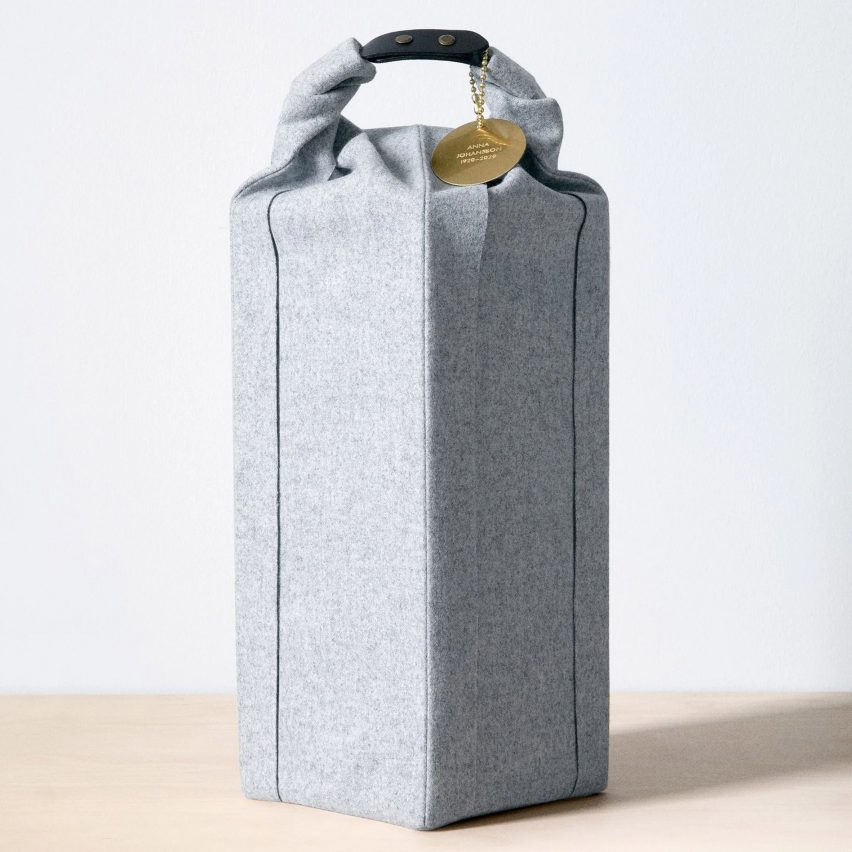
Ocke urn by Claesson Koivisto Rune
Making use of wool's natural ability to biodegrade, Claesson Koivisto Rune designed a more sustainable urn for an independent funeral home in Stockholm.
The woollen vessel breaks down in soil in a matter of months, according to the studio, as well as giving a sense of warmth and comfort for the bereaved.
"Textile burial cowlings have been used for bodies and caskets since the beginning of history," co-founder Mårten Claesson told Dezeen. "Probably it is a question of nursing and care that lies deeply rooted within us, regardless of tradition or belief."
"Wool is also of course a natural fibre that has been used to warm humans throughout history, with the unique ability to hold warmth both when dry and moist," he added.
"In this case, these functions are of course symbolic and that is where the importance lies. There is a comforting symbolism in the fact that everything goes back to the earth 100 per cent."
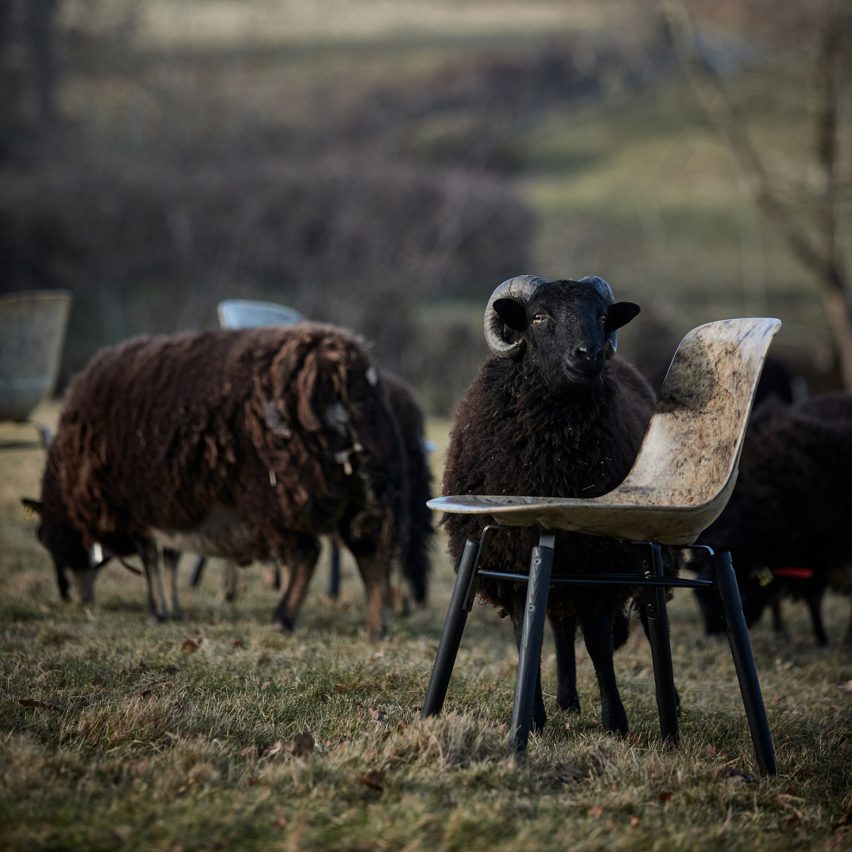
Welsh Mountain Hembury Chair by Solidwool
Shortlisted in the furniture design category of this year's Dezeen Awards, this chair is made using wool from Welsh Mountain sheep – with one whole fleece needed per piece.
The design resembles the moulded fibreglass chairs pioneered by Charles and Ray Eames in the 1950s. But in this case, the shell seat is reinforced not by glass fibres but by waste wool from sheep that are primarily bred for their meat rather than their coarse coat.
The fibres are held together using bio-resin – a plastic with around 50 per cent bio-based renewable content – which reduces the impact compared to the original fibreglass chairs but creates a material that is almost impossible to recycle.
Find out more about the Welsh Mountain Hembury Chair ›